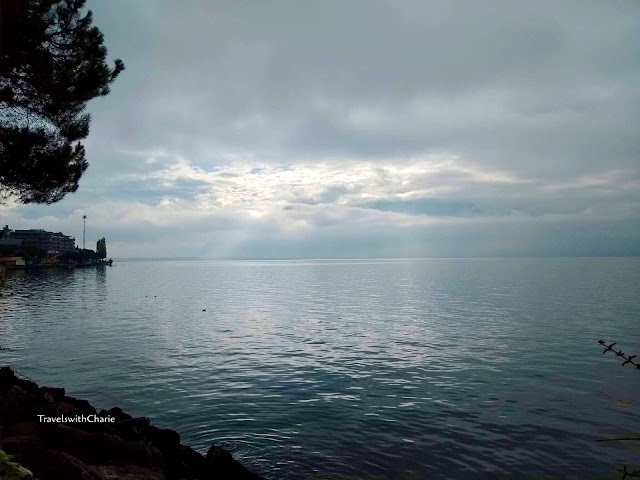Chateau de Chillon
There are seven pillars of Gothic mould,
In Chillon's dungeons deep and old,
There are seven columns, massy and grey,
Dim with a dull imprison'd ray,
A sunbeam which hath lost its way,
And through the crevice and the cleft
Of the thick wall is fallen and left;
Creeping o'er the floor so damp,
Like a marsh's meteor lamp:
And in each pillar there is a ring,
And in each ring there is a chain;
That iron is a cankering thing,
For in these limbs its teeth remain,
With marks that will not wear away,
Lake Leman
Lake Leman lies by Chillon's walls:
A thousand feet in depth below
Its massy waters meet and flow;
Thus much the fathom-line was sent
From Chillon's snow-white battlement,
Which round about the wave inthralls:
A double dungeon wall and wave
Have made—and like a living grave
Below the surface of the lake
The dark vault lies wherein we lay:
We heard it ripple night and day;
Sounding o'er our heads it knock'd;
And I have felt the winter's spray
Wash through the bars when winds were high
The Prisoner of Chillon, Eugène Delacroix, 1834*
It might be months, or years, or days—
I kept no count, I took no note—
I kept no count, I took no note—
I had no hope my eyes to raise,
And clear them of their dreary mote;
At last men came to set me free;
I ask'd not why, and reck'd not where;
It was at length the same to me,
Fetter'd or fetterless to be,
I learn'd to love despair.
And thus when they appear'd at last,
And all my bonds aside were cast,
These heavy walls to me had grown
A hermitage—and all my own!
The Prisoner of Chillon was written by Lord Byron in 1816. Please read the poem in its entirety here: https://www.poetryfoundation.org/poems/43842/the-prisoner-of-chillon
*The Prisoner of Chillon painting is from the collection of the Louvre Museum, Paris. It was painted in 1834 by Eugène Delacroix, a French Romantic artist. Oil on canvas. This painting is in the public domain.
Where to stay:
Grand Hotel Swiss Majestic, Autograph Collection
Avenue des Alpes 45, Montreux
Convenient location overlooking Lake Geneva and a stone’s throw from the train station (perfect for travelers planning on exploring nearby cities like Lausanne, Gstaad, etc.)
*****
Photographs by TravelswithCharie


